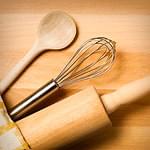
A perfectly roasted turkey is the holy grail of every cook on Thanksgiving. To help you achieve this goal, we’ve collected some tips from some of our best authors.
For more tips, recipes, menus, and videos to help you pull off the perfect Thanksgiving, check out ourGuide to Thanksgiving Dinner.
We’ve also gotanswers to your burning turkey questionsand thecure for your pie anxiety. If it’s menu anxiety you’re feeling right now, use ourThanksgiving Menu Makerto select recipes and get a shopping list and timeline to keep you on track.
1. Choose a fresh turkey instead of a frozen one.
Ice crystals that form during freezing damage a turkey’s muscle cells. When the bird thaws and roasts, fluids leak more readily from the damaged cells, drying out the meat.
2. Roast two small turkeys rather than one large one.
Smaller turkeys roast more evenly than large ones, so for feeding a crowd, two small turkeys are a better option. They’ll cook quicker, too.
3. Brine the turkey.
A turkey soaked in a salt-water solution absorbs both the salt and the water, so it’s moister to begin with as well as seasoned on the inside. You can flavor a brine as well.Read herefor more on the science behind brining.
4. Rub soft butter under the skin.
As it melts, it bastes the turkey and adds buttery flavor. For even more flavor, you can add herbs and spices to the butter (see, for instance,Smoked Paprika & Fennel Seed Roast Turkey with Onion Gravy).
5. Truss loosely, or not at all.
Legs tied up tightly against the sides of the turkey take longer to roast, putting the breast meat in jeopardy of overcooking while the legs take their time. For more on how to truss,watch our video.
6. Roast the turkey upside down at first.
Placing the turkey, breast side down, on a V-rack for the first hour or so of roasting essentially allows it to baste itself. Any marks left by the rack will disappear once you flip the turkey over and finish roasting it.
7. Don’t overcook it.
Use a thermometer, either instant-read or probe-style, to monitor the temperature in the thickest part of the thigh (be careful not to hit the bone). You’re aiming for 170°F.
8. Let the turkey rest before carving.
The intense heat of the oven forces the juices into the center of the bird, so after roasting, let the turkey rest for roughly 20 minutes (enough time tomake the gravy). The juices will redistribute, and you’ll get moister slices.























Comments
Leave a Comment
Comments
-

Chris_Daviddd | 11/17/2021
-

saharashimat | 12/22/2020
Show More今年我一定用你的食谱!我可以use convection to roast it or would it be best not to? and please visit us:https://www.beckandbulow.com
Nice one! thank you so much! Thank you for sharing this post. Your blog posts are more interesting and impressive.
https://airtravelmart.com/